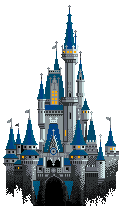

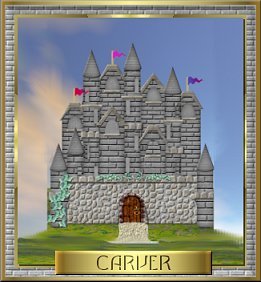
|
Be warned, Victorian Castles do not generally house lifts/elevators and some guests may be accommodated on the top floor. 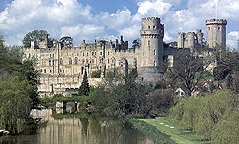
Tullynally has been owned by the Pakenhams, later Earls of Longford, since the 17th century. The original house was remodelled by the 2nd Earl as a huge rambling Gothic revival castle in the early 1800s, now one of the largest in Ireland to survive as a family home. There is a fine collection of Irish furniture and portraits, and guided tours include the splendid Victorian kitchens and laundries. The romantic pleasure grounds and walled gardens also date from the early 1800s and cover nearly 30 acres including two ornamental lakes and a grotto. The present owners have added a Chinese garden, complete with pagoda and a Tibetan garden of waterfalls and streams; and a local sculptor has made fantastic woodcarvings in existing roots and trees. The walled gardens have extensive flower borders and a magnificent avenue of 200 year old Irish jews.
Rawr, rawr, meraw Sir Wally!
Castle Coch is a fairytale timeless construction in the woods and embodies a glorious dream of the Middle Ages. Its round towers and turrets peep unexpectedly through the trees on the hills north of Cardiff in South Wales. This enchanting little castle is a combination of Victorian Gothic fantasy created by the brilliantly eccentric architect William Burges for the third Lord Bute, a fellow lover of the medieval and reputedly the richest man in the world. A companion retreat for Bute's medieval fantasy palace at Cardiff Castle, it was begun in 1875 on the site of the 13th century ruins of the 'Red Castle'. There Burges built his scholary ideal of a castle, complete with fully operational drawbridge and crowned by conical roofs. Within its authentic looking walls, however, he gave free to his exuberant creative imagination. Thus the wonderful vaulted ceiling of the drawning room is thronged with birds while its walls are painted with Aesop's fables, Lady's Bute bedroom offer interesting contrasts in style and comfort. Every room and every furnishing continues the fantasy. Rarely used and still perfectly preserved, this Victorian extravaganza must be seen to be believed!
Haff a good day! 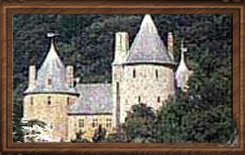
Carolina Kitty presents castles from a different POV...an excellent choice for this project! Click HERE to see her neat page! No Victorian site would be complete without a castle and what better choice than Windsor Castle. For centuries the Queens have resided here and filled it with beautiful treasures. 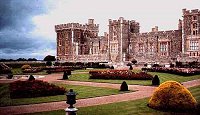 William the Conqueror, with the help of his army, commenced the construction of Windsor Castle. High above the River Thames, on the edge of a Saxon hunting ground, the castle was designed to guard the western approaches to the capitol. Since those early days, Windsor Castle has been inhabited continuously and improved and restored by successive monarchs according to their taste and style. Some were great builders, strengthening the castle against uprising and rebellion. Others living in more peaceful times created a palace within the apartments of their ancestors. Today, nine centuries after its foundation, the castle continues to perform its prime role as an official residence of The Queen. The State Apartments are the formal rooms used for ceremonial, state and official occasions. They range from the smaller, intimate rooms of Charles II's apartments to the vast scale of the Waterloo Chamber, built to commemorate the famous victory over Napoleon in 1815. 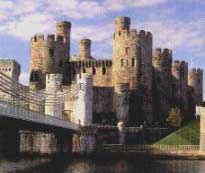 Castle Falkenstein is a role playing game set in the Victorian past of an alternate world, known as New Europa. As its basic premise, the game imagines that the best fantasy and speculative fiction of the Victorian Age - the works of Jules Verne, H.G. Wells, the brothers Grimm, Robert Louis Stevenson, Bram Stoker and Sir Arthur Conan Doyle, for example - are true. Sherlock Holmes is just setting up his rooms at 221b Baker Street and Alan Quartermain seeks the fabled mines of King Solomon in the uncharted heart of Africka, while Jules Verne has sent man to the moon using his giant cannon, HG Wells visits the past and future in his time machine and Captain Nemo pilots his Nautilus beneath the oceans of the world. These 'infernal devices' are one-of-a-kind, not a true reflection of the technology of the age. The streets are lit by gas, while Alexander Graham Bell has not yet realised his ideas for the telephone. Most machinery is still powered by water or gas, but efficient, low-cost steam and clockwork are set to transform the Victorian era into a renaissance of science and invention. Steam trains journey between the major cities of New Europa, traveling at speeds up to 75mph, Babbage's computational device can be programmed to calculate mathematical formulae and store information, ironclads and dreadnaughts patrol the seas, and the wealthy venture out onto the streets of London in steam automotives; images of Victorian life are preserved for posterity on daguerrotype photographs. And when technology is combined with magic, the most wonderful things can happen. The gate bracelet was an essential accessory for every Victorian lady, including Queen Victoria. This hand-made gold bracelet is elegant and graceful, yet sturdy enough to wear every day. The "gates" are linked together to resemble barred gates of old castles in England and are secured by a heart-shaped "padlock". You could even purchase one HERE  Blackrock Castle, Co. Cork, Ireland The original 'Castle' is indicated as having been a fort, erected by Lord Deputy Mountjoy in 1604 .This building had a beacon light from a turf fire to guide shipping. In 1722 the old tower was destroyed by fire and a new one built by the citizens. The second building was also destroyed by a fire in 1827, and was again rebuilt by the city fathers at a cost of about 1,000 pounds. It has since passed into private ownership and is now a restaurant. Blarney Castle, Co. Cork Blarney Castle is one of the most famous castles in the world. On the parapet of a ruined tower lies one of the world's most revered pieces of stone. The Blarney Stone is believed to be half of The Stone of Scone upon which the Kings of Scotland were crowned. It was given to Cormac MacCarthy by Robert the Bruce in 1314. To kiss the Blarney Stone you have to lean backwards out of the parapet. During the 17th century Bamburgh Castle had deteriorated to such a degree that only the huge, square keep of the Norman fortress remained standing. A major restoration was undertaken throughout the Victorian era, and this was followed in the early 1900s with more substantial reconstruction work by Lord Armstrong, the renowned arms manufacturer who lived close-by at Cragside. Although it is still inhabited in part by Armstrong's descendants, and numerous tenants living in the private flats, the rooms accessible to the public are quite magnificent. To learn more about this castle and see pictures, visit
HERE
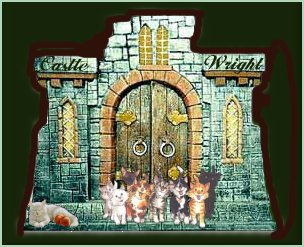 HOME |